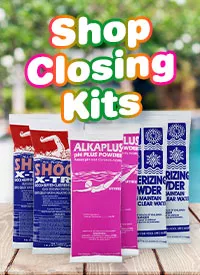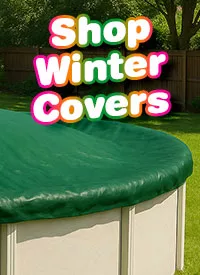How to Lower Chlorine in Your Pool

If your pool smells like a chemical plant or your eyes sting after a swim, your chlorine levels might be too high. While chlorine is essential for keeping your pool clean and safe, too much of it can irritate skin, fade swimsuits, and even damage pool equipment over time.
So … how do you lower chlorine in your pool without turning it into a swamp?
Let’s break it down.
Why Is Chlorine Important in the First Place?
Chlorine is the frontline defender against germs, bacteria, and algae. Every time someone swims, sweats, or tracks in dirt, your pool gets hit with contaminants. Add in pollen, leaves, and bugs from the environment, and it’s clear why sanitizer is essential.
Chlorine neutralizes those threats and helps keep your water sparkling and safe. But balance is everything.
What Happens When Chlorine Gets Too High?
If your pool’s chlorine level climbs above the recommended range (usually 1–3 ppm for free chlorine), you might notice:
- Strong chemical odor
- Burning eyes or itchy skin
- Faded swimsuits or pool liners
- Corrosion of metal parts or pool covers
In some cases, high chlorine isn’t even effective—especially if your pH is off or you're dealing with chlorine lock (when free chlorine is high, but total chlorine stays stuck).

How to Lower Chlorine in Your Pool
Whether you accidentally over-shocked your pool or chlorine built up over time, here’s what to do.
1. Stop Adding Chlorine
Pause all chlorination. Turn off the chlorinator, remove tablets, and stop adding liquid chlorine or shock.
2. Let the Sun Help
UV rays naturally break down chlorine. Leaving your pool uncovered for a day or two can reduce chlorine levels by up to 90%, especially in sunny weather.
If you're looking for a quick, natural way to reduce chlorine levels, sunlight is your best friend. Just leave your pool uncovered for a day or two, and UV exposure will help burn off the excess. Just be sure to monitor your water to prevent algae growth during this time.
3. Dilute with Fresh Water
If your chlorine level is sky-high, partially draining the pool and refilling with fresh water can bring it back to balance. This is especially helpful if your cyanuric acid (stabilizer) is also too high.
4. Use a Chlorine Neutralizer
Need faster results? Chlorine neutralizers like sodium thiosulfate can quickly lower levels. Just be sure to dose carefully based on your pool size and test results.
Can I use hydrogen peroxide to lower chlorine in my pool?
It’s possible, but it’s not usually recommended for standard chlorine pools. Hydrogen peroxide (especially food-grade 35%) is sometimes used in non-chlorine systems or spas, but it requires precise dosing and can throw off your water chemistry. Most pool owners use sodium thiosulfate instead, since it’s safer and easier to measure accurately.
What About Salt Water Pools?
Salt water systems generate chlorine automatically, but yes, you can still have too much.
If you need to lower chlorine in a salt water pool, start by dialing down the output on your salt chlorine generator—or turning it off for a day or two. Then leave the pool uncovered so sunlight can help break down the excess chlorine. Be sure to test your levels regularly until they return to the recommended 1–3 ppm range.

What’s the Difference Between Free and Total Chlorine?
- Free chlorine is the active sanitizer that kills bacteria.
- Total chlorine is the combined amount of free chlorine plus chloramines (used-up chlorine).
- Combined chlorine is the portion of total chlorine that’s no longer effective and may cause odor or irritation.
If your total chlorine is high but free chlorine is low, you may have a buildup of chloramines and need to superchlorinate (shock) the pool to break them down.
Final Tip: Get Your pH Right
Even if your chlorine level is perfect, it won’t work well unless your pH is in the right range. Aim for a pH between 7.4 and 7.6 to keep chlorine effective. If your pH is too high or low, chlorine becomes less efficient, and that’s when people start dumping in more than they need.
Summary: How to Lower Chlorine in Pool
- Stop adding chlorine
- Remove chlorine tablets or turn off salt system
- Leave the pool uncovered to let sunlight burn off excess chlorine
- Partially drain and refill the pool with fresh water if needed
- Use a chlorine neutralizer (like sodium thiosulfate) for fast results
- Balance your pH to support proper chlorine function
Whether you're managing a salt water system or a standard chlorine pool, regular testing and balance are key. Chlorine does the heavy lifting, but only when used wisely.






 Pools
Pools Spas
Spas Liners
Liners Equipment
Equipment Covers
Covers Accessories
Accessories Cleaning
Cleaning  Pool Fun
Pool Fun  Clearance
Clearance


